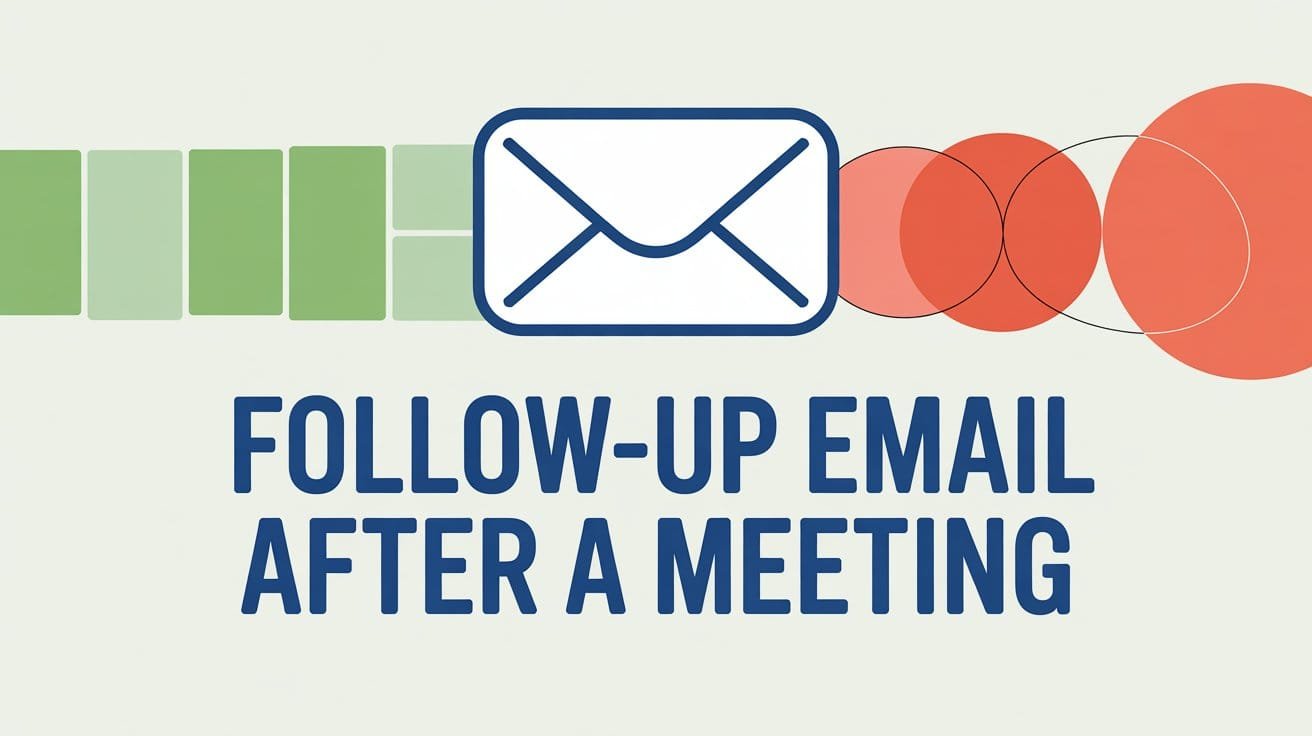Sending a follow-up email after a meeting isn’t just good manners; it’s a smart way to strengthen connections and clarify next steps. Whether it was a team check-in, a client call, or a casual networking chat, following up shows that you’re organized, attentive, and committed to moving forward.
In this guide, you’ll learn how to write a clear, polite follow-up email after a meeting. We’ll cover what to include, how soon to send it, and provide ready-to-use examples you can adapt for different situations.
Why Send a Follow-Up Email After a Meeting
A meeting may end, but the conversation and the action often continue by email. Following up ensures everyone is aligned and helps keep momentum going.
Reinforce Key Takeaways
Meetings can be fast-paced or filled with information. A follow-up email helps confirm what was discussed, what decisions were made, and what comes next.
Clarify Action Items
If tasks were assigned or deadlines were mentioned, restating them in a follow-up helps reduce confusion and keeps responsibilities clear.
Show Professionalism
Taking the time to follow up demonstrates that you’re dependable and respectful of others’ time. It can leave a strong impression, especially after networking or first-time meetings.
Keep the Relationship Going
Whether you’re following up with a potential client, a hiring manager, or a colleague, a thoughtful email helps you stay connected and build trust over time.
What to Include in a Follow-Up Email After a Meeting
Your follow-up email should be clear, respectful, and easy to scan. Whether you’re confirming tasks, thanking the attendees, or continuing a conversation, here are the elements to include:
A Clear Subject Line
Make it easy for the recipient to know what your email is about.
Examples:
- Follow-Up: [Meeting Topic]
- Recap and Next Steps – [Project Name]
- Great Meeting Today – Quick Summary Inside
A Polite Greeting
Start with a friendly, appropriate greeting using the recipient’s name.
Example:
Hi Alex,
Hello Ms. Patel,
A Thank-You Message
Acknowledge their time and participation.
Example:
Thanks again for meeting with me earlier today. I appreciated the opportunity to discuss [brief topic].
Recap of Key Points (Optional)
If decisions were made or important topics came up, mention them briefly.
Example:
As discussed, we agreed to review the updated outline by Friday and begin the draft by next week.
Next Steps or Action Items
List what happens next and who is responsible.
Example:
- I’ll send the updated draft by Thursday.
- You’ll confirm the client feedback before our next check-in.
A Courteous Closing
Wrap up with a respectful note and offer to assist if needed.
Example:
Let me know if I missed anything or if there’s anything else I can help with.
Your Signature
Include your full name, role, and contact information (if relevant).
Follow-Up Email Templates for Different Meeting Types
Use these templates to follow up after various kinds of meetings. Each one can be adjusted based on the tone and purpose of your conversation.
Team or Internal Meeting
Subject: Recap and Next Steps – Weekly Check-In
Hi [Team Name or Name],
Thanks for today’s meeting. Here’s a quick summary of what we covered and what’s next:
- Finalize project outline by Wednesday (assigned to Maya)
- Review budget proposals before Friday
- Prepare slides for next week’s client presentation
Let me know if anything needs to be updated. Looking forward to keeping things moving.
Best,
[Your Name]
Client Meeting Follow-Up
Subject: Follow-Up on Today’s Project Discussion
Hello [Client Name],
It was great meeting with you earlier. I appreciate your feedback on the proposal. As discussed, I’ll update the plan and send a revised version by Friday.
Please feel free to reach out if you have additional input before then. Looking forward to the next steps.
Warm regards,
[Your Name]
[Your Company and Contact Info]
Networking or Informational Meeting
Subject: Great Connecting – Thanks Again
Hi [First Name],
Thank you again for taking the time to speak with me today. I enjoyed learning more about your work in [industry/field] and appreciated your insights on [specific topic].
I’d love to stay in touch and will follow up next month as we discussed. Please don’t hesitate to reach out in the meantime.
Best,
[Your Name]
Related: How to Write a Follow-Up Email After No Response
Interview-Style Meeting (Informal or Second-Round)
Subject: Thanks for the Meeting – [Your Name]
Dear [Interviewer’s Name],
Thank you for meeting with me earlier. I enjoyed our conversation about the role and learning more about the team’s vision for [brief detail].
I remain very interested in the position and look forward to any updates you can share. Please let me know if you need anything further from my side.
Sincerely,
[Your Name]
Related: How to Write a Follow-Up Email After an Interview
Tips for Writing a Professional Follow-Up Email
A follow-up email should feel helpful, not like an obligation. These simple tips will help you write a message that’s both respectful and effective.
Keep It Timely
Send your follow-up within 24 hours of the meeting, while the conversation is still fresh.
Keep It Brief
Respect the reader’s time. Aim for 3–5 short paragraphs or fewer. Bullet points help make tasks or decisions easy to scan.
Be Clear and Organized
Don’t bury your point. Mention key takeaways or tasks early, and break them into clean sections if needed.
Use a Friendly, Professional Tone
Even in casual meetings, it’s best to sound warm and professional. Avoid slang or overly casual language like “no worries” or “just checking in real quick.”
Proofread Before You Hit Send
Double-check names, spelling, and dates. A small error, like writing the wrong meeting time, can confuse your recipient or undermine your message.
Conclusion
A well-written follow-up email after a meeting helps turn conversations into action. Whether you’re confirming next steps, showing appreciation, or staying connected, a thoughtful message reinforces that you’re reliable and engaged.
By keeping your email timely, clear, and polite, you create space for better collaboration and stronger relationships moving forward.



